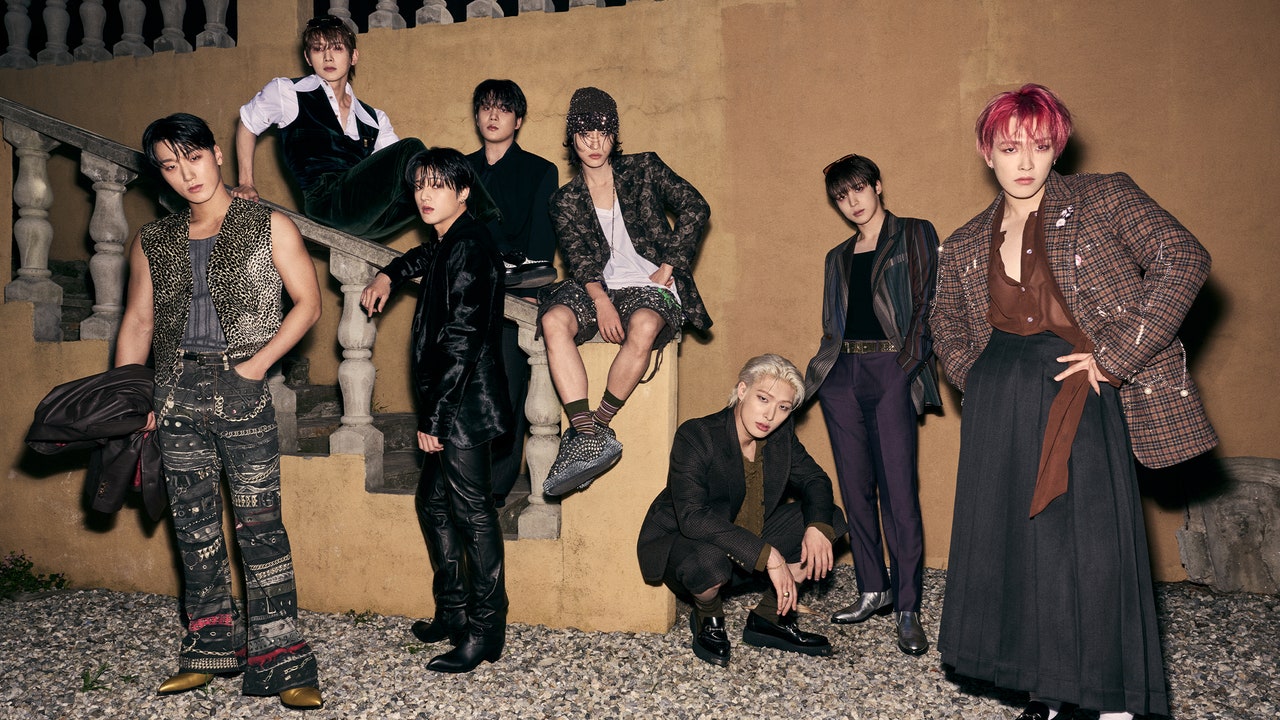So KQ signed Hongjoong as a trainee, and then began casting his eventual bandmates. The boys who hailed from different parts of South Korea moved to Seoul, and together they began a battery of dancing and singing lessons that took up all of their time outside of school, including on the weekends, when they worked from 10 a.m. to 10 p.m.—or deeper into the night if they had to prepare for monthly evaluations by company staff. Like many of their peers, most of the members were inspired by groups like BigBang, Highlight (formerly Beast), and Exo.
But one of the reasons Ateez doesn’t quite sound like other K-pop groups is its unusually deep pool of influences. Hongjoong cites Michael Jackson and David Bowie as personal heroes, while Mingi—the deep-voiced rapper who writes his own verses—surprises me by sharing his love for Kim Jong Kook’s cutesy 2005 K-pop hit “Loveable.” Jongho, one of his generation’s most technically impressive K-pop singers, loved Yoo Jae-Ha’s 1987 ballad “Because I Love You.” “Even though I was young, I was so moved by the lyrics and emotions,” he says. “I wanted to become a singer who could portray these kinds of feelings.”
KQ then sent the trainees to Los Angeles for a month, a formative period now preserved in KQ Fellaz American Training, a docuseries of the sort often produced by K-pop companies to juice fan interest before a group officially debuts. In clips from the 2018 show, the members are bright-eyed in their adjustment to, among other things, the constant presence of camera crews. They endured dance boot camp, learning three to four routines a day. “We took so many lessons that we would dance in our sleep!” exclaims Yunho.
San recalls his perspective shifting the moment he saw a sign at an LA dance studio that read: “No racism, no sexism, just dance.” “I was really moved by that one line,” he explains. “Basically, being different is not wrong. There’s no wrong and no right—it’s just different. So I learned dance skills too, but the most important thing was that mindset.”
The group found such a message of inclusivity inspirational as they trained to become stars. “The K-pop scene has rules, like, ‘Only this way is cool.’ But in America, there’s no set answer,” Seonghwa adds. “So while we were training in the US, we learned about the idea of not really having a set answer. Through that, our dance, our creativity, our genre was able to widen.”
The life of a K-pop star is often paradoxical. “We definitely have that mindset of wanting to challenge ourselves,” Mingi says. “But we’re also just humans who want to live our lives.”
They are not just singers or performers. They’re idols, the kind of people who inspire fan fiction, constantly churning social media accounts, and devotees who would wait hours just to be in the same room with them.
Accordingly, as morning turns to afternoon on set, members wander through the house in increasingly elaborate costumes, preparing to take photos that might end up on someone’s bedroom wall. Seonghwa clomps up the stairs in heavy platform clogs. He’s dripping in studs and spikes, topped off with a rakishly tilted beanie. He scans himself in the mirror, as if trying to get into character.


